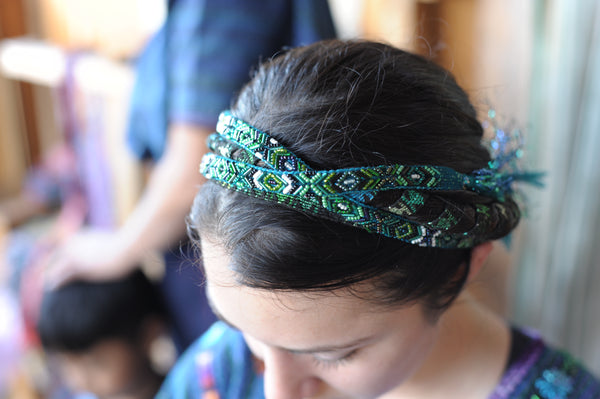We live in a crazy and sensitive time. Are we being politically correct? Am I offending anyone? Should they change the name of that football team?
(Side note: Yes, they should.)
Cultural appropriation is the new hot topic plate. Provecho.
So is it acceptable to adopt elements of a culture? How about when it comes to fashion?

It’s tricky because there are some instances where it is downright disrespectful and other instances where it is a beautiful homage. We can all agree, however, that most of us are wading through mixed feelings and uncharted territories of gray.
Honestly, what better way to find out than starting a conversation with members of the culture and just flat out ask them whether or not it pisses them off?
Bringing it back home to our beloved Lake Atitlan, huipils are the traditional embroidered blouses worn by Maya women and girls, and the fashion world is making it a trend. Hiptipico receives tons of comments, on the daily, about how much everyone loves the bold colors and patterns. Along with those good vibes however, comes the occasional party pooper just, well, poopin’ on the party.
As a result, we decided to talk to a variety of women in the community, from the artisans we work with to teenage schoolgirls. Their answers are consistent. They don’t mind and it’s actually kind of cool to see their old huipils being repurposed and fashionable, again. They’re not doing anything with them anymore, so why not?
First off, when someone accompanies us to an artisan home visit in San Antonio Polopo, the women excitedly ask if they can dress up the females in our group and do their hair. They pull out older styles of their dark skirts, along with their blouses of blended blues, purples and greens. The fun part, though, is when they get to braid hair and entwine their traditional shimmery handmade hair bands in the strands. (A couple of weeks after my first artisan visit with friends, I ran into Maria from San Antonio on the main street and she asked where my friends were and when we were coming back).
When we go to the bomberos (it translates to “fire department,” but there’s a fabric resale market that sets up Tuesdays and Fridays in the fire department’s parking lot), the ladies take their time to explain where each of the huipils are from and how their embroidery projects are coming along. There is a lot of pride in the sale and history of these fabrics. Several other Guatemalans, including our artisans, who shop at the bomberos reuse the fabric for bags, jackets, and other new products.
These are ceremonial, those are last year’s trend, and this is my price. If you don’t buy them, they just sit under the tent or in storage until the next market day.
The open and transparent dialogue we have with the indigenous people serves as the foundation of Hiptipico. Their enthusiasm and our day-to-day interactions show that they trust us, and they continue to invite us to partake in their culture and honor the Maya traditions and textiles.
However, at Hiptipico, we fully understand the concern that comes with such a sensitive topic, and we agree that there are some instances where cultural elements being implemented into trends is absolutely unacceptable. For instances, Native American headdresses, which are presented by tribes when certain achievements are reached, we recognize as a restricted and sacred item. There’s no question.
On that note: Be mindful of how you incorporate a culture into your wardrobe. Just as you shop mindfully, regarding the origin of your clothes (i.e. who made them, fair wages), wear them mindfully. You received special permission, whether directly or indirectly, to represent a group of people and their story. Tell it and wear it well.
We'd love to hear your thoughts on this! If you have any questions or concerns, feel free to reach out to us at info@hiptipico.com.
♡
≫ Follow along LIVE from Guatemala and browse more of our fair trade products on Instagram (@hiptipico).
♡ See our female founder's daily posts featuring other ethical fashion brands and collaborations (@alyssaya).
≫ Be sure to like Hiptipico on Facebook for global news, travel and women's empowerment.












